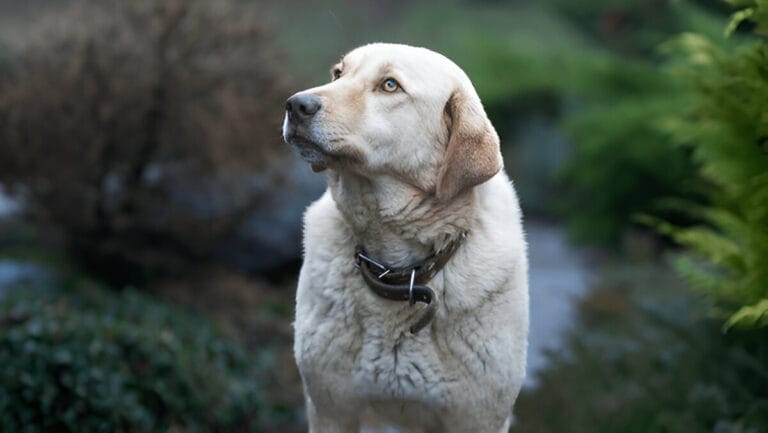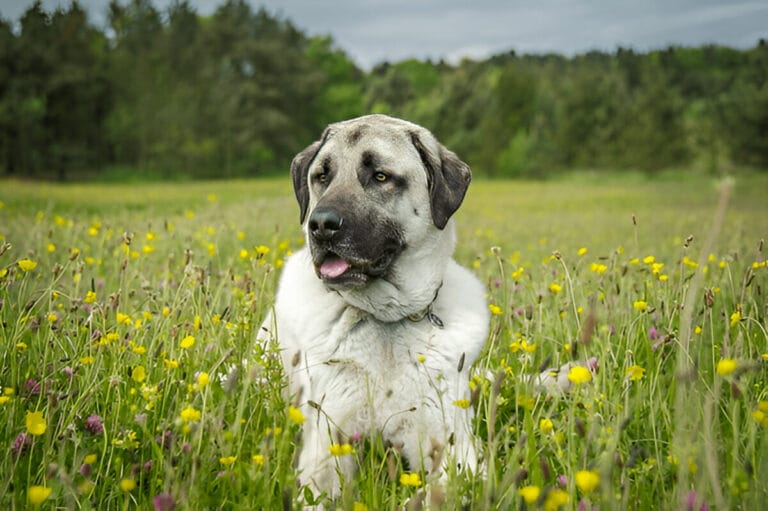The Fascinating World of Blue German Shepherds
German Shepherds have been a long-standing favorite among dog lovers for years, and there’s really no wonder why – they’ve proven to be extremely useful for service-related tasks and general companionship.
While you might be familiar with the standard tan and black coloration, or possibly even sable variations, the less common yet absolutely gorgeous blue color remains something that isn’t widely accepted by major kennel clubs, making these stunning dogs not easy to find. This article is going to go over a little history of the breed and help you learn more information about this very popular dog in the United States.
Often people thought these dogs only come in one traditional color pattern, but the fact is that this breed comes in quite a few different colors, with blue being one of the rarest.
The Blue German Shepherd has the same temperament and characteristics as its traditional counterparts, though it’s a relatively new addition to the GSD family. If you’re interested in learning about this unique coloring, keep reading below to see whether this special pup might be right for you.

Photo credit: Shutterstock by Veronika Csereiova
Breed Overview
The blue color in German Shepherds is truly something remarkable that I’ve witnessed firsthand during my years working with these magnificent dogs.
This unique dilute gene essentially takes the already gorgeous colors of a German Shepherd and simply tames them down, creating a stunning bluish-gray hue in their fur instead of the standard black and tan we typically see.
These impressive dogs typically reach a height of 24–26 inches and weigh between 50–90 pounds, making them substantial yet graceful companions with a lifespan of 9–13 years. Their colors range from blue, black, tan, and sable, with that distinctive blue tone setting them apart from their traditional counterparts.
What truly strikes me about these dogs is their temperament – they’re incredibly loyal, intelligent, and easy to train, while maintaining that natural protective instinct that makes German Shepherds so valued.
These remarkable animals are suitable for active families and excel in roles requiring service work or emotional support, thanks to their intuitive nature and strong bond with their handlers.
The blue variation considered a rare gem in the breed doesn’t just offer visual appeal – it represents the same working drive and devotion that has made German Shepherds legendary companions for decades.
Blue German Shepherd Characteristics
Energy
These high-energy dogs absolutely need a lot of mental and physical stimulation to stay happy and healthy, which I’ve learned through countless training sessions with Blue German Shepherds over the years. Unlike low-energy breeds that require minimal activity, these magnificent dogs demand consistent engagement and purposeful exercise to thrive in any environment.
When choosing a dog, it’s absolutely important to make sure your energy levels perfectly match their needs and your lifestyle, or vice versa – because a mismatch can lead to destructive behaviors and unhappy outcomes for both you and your Blue German Shepherd companion.
Trainability
Blue German Shepherds are remarkably easy-to-train dogs that demonstrate exceptional intelligence, making them more skilled at learning complex prompts and actions quickly compared to many other breeds I’ve worked with throughout my career.
These brilliant dogs often master commands with minimal training sessions, thanks to their natural eagerness to please and sharp mental capabilities that set them apart from other working breeds.
While some dogs are harder to train and require a bit more patience and practice, Blue German Shepherds consistently prove themselves as willing students who thrive on mental challenges and respond beautifully to consistent, positive reinforcement methods.
Health
Some breeds, particularly those with larger size like Blue German Shepherds, may face potential genetic health issues that can contribute to shorter lifespans than others, which I’ve observed through years of working with these beautiful dogs.
However, proper exercise, balanced nutrition, and consistent hygiene practices play an absolutely important role in extending the lifespan of your pet, often helping them reach their full 9-13 year potential despite any breed-specific challenges they might face.
Through my experience, I’ve seen how proactive health management and regular veterinary care can make a significant difference in maintaining the vitality and wellbeing of these magnificent Blue German Shepherds throughout their lives.
Lifespan
Some dog breeds are naturally prone to certain genetic health problems more than others, and while this doesn’t mean that every Blue German Shepherd will have these issues, there is an increased risk that makes it important to understand and prepare for additional care needs they may require throughout their 9-13 year lifespan
Sociability
Some dog breeds are naturally more social than others, displaying welcoming behavior both towards humans and other dogs, while more reserved breeds have a tendency to run from strangers and unfamiliar pets rather than seek scratches and attention.
Blue German Shepherds tend to be less shy but won’t away from being cautious around new people and situations, and without proper socialization, they can become even potentially aggressive when faced with unfamiliar circumstances.
No matter the breed, it’s absolutely important to socialize your Blue German Shepherd early and expose them to lots of different situations, people, and animals, which I’ve found through my experience creates confident, well-adjusted dogs who can navigate the world with appropriate responses to various social encounters.
Photo credit: Shutterstock by chris orlando
The First Historical Records of Blue German Shepherds
Even though you might be just hearing about the blue color variation in German Shepherds, this stunning coloration has actually been around for quite some time – in fact, one of the very first dogs with this unique coat coloration was born in 1899.
That means this particular variation is over 100 years old, with Hornand von Grafrath being among the earliest documented cases of this distinctive blue-gray appearance, and its prevalence has been growing ever since in the breed community.
The Shepherd was originally bred as a herding dog, but these magnificent animals have shown themselves to be wonderful working companions who have taken on roles such as guide dogs, search and rescue teams, watchdogs, guard dogs, police and military service, and even beloved family companion animals throughout their rich history.
There are a number of different color variations in German Shepherds, with Blue being one of the rarest and most difficult to produce, making it challenging to know exactly when each individual appeared in breeding lines.
Although not recognized by the American Kennel Club (AKC) and said to be a serious fault, this classification is also the same for liver colored dogs, creating a lot of controversy in the GSD world since the coloring doesn’t change their working characteristics – therefore many breeders say they should be accepted.
However others believe it’s caused by a gene mutation and should be bred out of the lines, which has sparked ongoing debates about the legitimacy and value of these beautiful blue-coated German Shepherds in the breeding community.
How Blue German Shepherds Gained Popularity
German Shepherds quickly gained popularity after recovering from their near extinction following World War II, and these remarkable dogs have only increased their appeal over the years, consistently remaining in the top five most popular breeds that the AKC has to offer to dog lovers worldwide. It’s really no wonder considering their exquisite sense of intelligence and unwavering loyalty.
Formal Recognition of the Blue German Shepherd
German Shepherds are an incredibly old dog breed that was first recognized by the United Kennel Club (UKC) in 1924. Interestingly, the American Kennel Club had accepted them before that, setting the standard in 1908. While the blue color variation isn’t specifically specified in AKC regulations, only the white coat is not accepted.
So technically, a blue German Shepherd would count against traditional expectations, though it’s not explicitly banned. From my experience with various Shepherds, these blue-coated dogs often face scrutiny at shows despite being genetically sound, with the United States showing early acceptance of this remarkable breed.

Photo credit: Shutterstock by Dan_Manila
Top 5 Unique Facts About Blue German Shepherds
1. The blue hue originates from an uncommon pigmentation
The blue coloration in a German Shepherd actually comes from a recessive dilute gene that lightens the normal black pigment throughout the dog’s coat, eyes, nose, foot pads, lips, and toenails. I’ve noticed that this genetic dilution creates a stunning silvery-blue appearance that affects every pigmented area on the dog’s body.
The recessive nature means both parents must carry this gene for puppies to express the blue coloration, making these Shepherds quite rare in the breeding world.
What’s fascinating is how the dilute gene doesn’t just affect the coat but transforms the entire pigmentation system, creating eyes that appear lighter, a nose that looks slate-colored, and even foot pads and lips that take on this unique blue-gray tone, with toenails following the same diluted pattern.
2.Blue appears in numerous color combinations within the shepherd breed
Not only do blue German Shepherd dogs come in several different hues like steel and powder blue, but they also display all the traditional color patterns found in standard shepherds.
That means you can have a blue shepherd with traditional markings in brown and tan variation, and of course, these unique colorations show up in sable coat patterns as well.
The steel blue variety tends to be darker and more dramatic, while powder blue shepherds have a softer, lighter appearance, yet both can display the classic saddle pattern, bi-color markings, or even the flowing sable coat that makes each dog truly unique in the German Shepherd world.
3. Blue-coated German Shepherds might have blue eyes
What is interesting about blue German Shepherd dogs is that they might also have blue eyes, and only this color variation can display this unique feature unless the dogs are mixed with another breed.
From my years of working with various shepherd bloodlines, I’ve observed that the same dilution gene responsible for the blue coat sometimes affects eye pigmentation as well, creating stunning blue or light-colored eyes that complement their silvery coat.
What makes this particularly fascinating is how the blue German Shepherd stands out as the only purebred color variation in the breed that naturally carries this possibility, making them incredibly striking and memorable dogs.
The blue eyes feature typically appears in puppies and can either remain throughout their life or gradually darken as they mature, though when it stays, it creates an absolutely mesmerizing combination that’s impossible to ignore.
4. German Shepherds are renowned for their remarkable abilities
German Shepherds, despite their color variations, have insane learning potential that remains unaffected by coat pigmentation. They are one of the smartest dogs among all breeds and can learn a variety of concepts from simple commands to extremely complex tasks.
German Shepherds consistently demonstrate insane problem-solving skills whether they’re working in law enforcement, search and rescue, or family protection roles. The learning potential of these dogs allows them to master everything from basic obedience to extremely complex multi-step operations, making them incredibly versatile working companions.
What’s remarkable is how They can learn simple concepts in just a few repetitions while also being capable of understanding intricate variety of tasks that would challenge many other breeds.
5. Insufficient social exposure and physical activity can trigger problematic behaviors in Shepherds
Remember, German Shepherds require a lot of stimulation every day regardless of their coat color. This involves both mental and physical activity to keep these intelligent dogs balanced and content.
If you don’t exercise your Shepherd properly, they can develop destructive tendencies and poor behaviors that affect the entire household. From my experience working with blue German Shepherds, I’ve seen how their high intelligence combined with inadequate stimulation leads to furniture chewing, excessive barking, and digging behaviors.
German Shepherds need both challenging puzzle games for mental engagement and vigorous physical activity like running or agility training. This breed thrives when given jobs to do throughout the day, and without proper outlets, they will create their own entertainment through destructive tendencies.
What’s crucial to remember is that a tired Shepherd is a well-behaved Shepherd, making consistent exercise and mental stimulation non-negotiable for preventing poor behaviors.

Photo credit: Shutterstock by Dan_Manila
Common Health Issues in Blue German Shepherds
Blue German Shepherds are typically robust canines, but similar to all varieties, they may be susceptible to particular hereditary and breed-related health concerns. Here are the most common ones:
- Hip Dysplasia
- Elbow Dysplasia
- Degenerative Myelopathy
- Color Dilution Alopecia (CDA)
- Bloat (Gastric Dilatation-Volvulus)
- Cataracts
- Progressive Retinal Atrophy
- Allergies, Obesity
- Skin Infections
From my experience with blue shepherds, Color Dilution Alopecia is particularly important to monitor since it’s directly linked to the dilution gene that creates their beautiful blue coat.
This condition can cause hair thinning and Skin problems, making regular grooming and veterinary care essential for these dogs.
Some proactive measures with your veterinarian’s guidance can contribute significantly to your dog’s long and happy life. Routine veterinarian visits allow for early detection of potential health concerns, ensuring timely treatment and prevention of more serious conditions.
Regular screenings for Hip Dysplasia, Elbow issues, and eye conditions like Cataracts or Progressive Retinal Atrophy help maintain your German Shepherd’s quality of life. Managing Obesity through proper diet and exercise, monitoring for Bloat symptoms, and addressing Allergies or Skin Infections promptly are crucial steps that, with veterinarian’s guidance, make a tremendous difference in your blue shepherd’s overall wellbeing and longevity.
Discover these Black German Shepherds: Background, Physical Traits, and More
Does the Blue German Shepherd Make a Good Pet?
A German Shepherd can make an amazing pet despite their color variation, and blue shepherds are no exception. These dogs are incredibly intuitive and intelligent, capable of picking up a variety of concepts on their own, and you can teach them to do just about anything with patience and consistency.
Early socialization is very important to ensure a well-rounded dog, and you should always purchase from a reputable breeder with a history of successful litters. From my experience working with blue shepherds, they display the same loyal, protective nature as traditional colors, making them exceptional family guardians when raised properly.
With breeds like German Shepherds, they are often associated with aggression, so getting proper genetics is essential for a balanced temperament. Luckily, there are plenty of Shepherds in the world, and the likelihood that you’ll find one at a rescue or shelter is high.
If this type of shepherd interests you, try to price out a blue German Shepherd as they will be much more expensive than traditional colors due to their rarity. What’s important to remember is that regardless of coat color, these dogs require dedicated training, exercise, and mental stimulation to thrive as family pets, making them best suited for experienced dog owners who understand the breed’s needs.
In Conclusion
Having worked with German Shepherds for over a decade, I can confidently say that a Blue German Shepherd will make an excellent member of any family. With their unique gene that gives them a gorgeous coat, these pups have the exact same fantastic temperament as their GSD brothers and sisters, working well as both guard dogs and beloved companions.
Although they can have high grooming needs and require regular exercise, if you love spending time with your furry friend outdoors playing games, this companion is perfect for running and hiking adventures. The Blue variation of this loyal, loving dog brings all the intelligence and protective instincts you’d expect from a traditional German Shepherd, just wrapped in an absolutely stunning steel-blue coat that turns heads wherever you go.
















